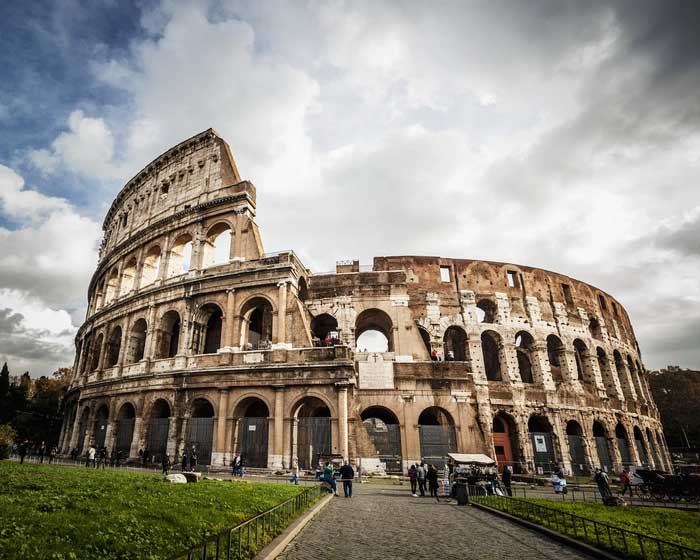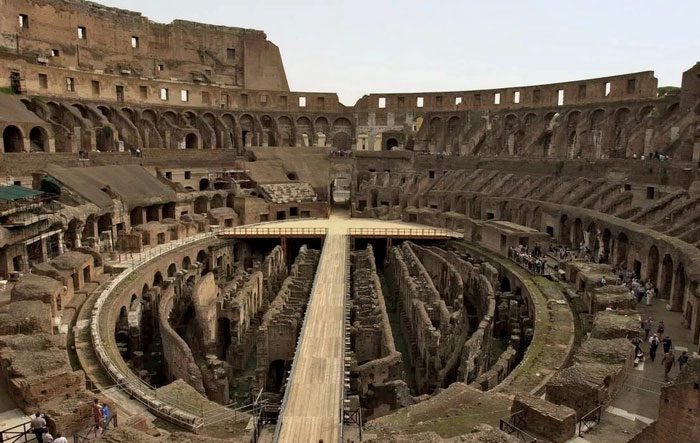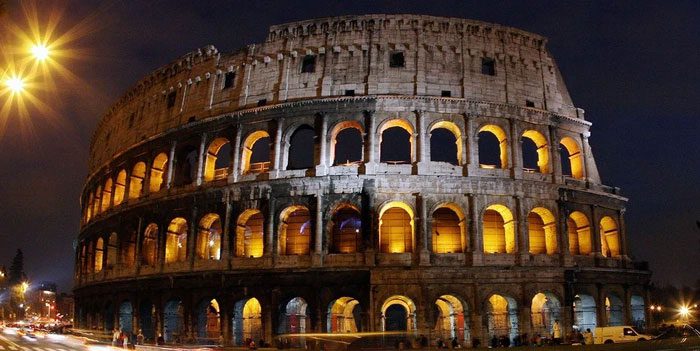The ancient Roman Colosseum has stood for nearly 2,000 years. How was this monumental structure built to withstand the test of time for so long?
The Roman Colosseum was constructed starting in 72 AD, during the reign of Roman Emperor Vespasian (9-79 AD). The construction was completed in 80 AD under Emperor Titus. Upon completion, the grand opening celebration lasted for 100 days and nights.
Emperor Vespasian named this amphitheater after his dynasty, the Flavian dynasty. In fact, it was the largest circular theater in Rome at the time of its completion, measuring 188 meters in length and 156 meters in width. The arena itself measured an impressive 83 by 48 meters, featuring a wooden floor covered with sand, resting on a complex underground structure known as the hypogeum (meaning “underground” in Greek).
The Materials Behind the Strength of the Roman Colosseum

The Roman Colosseum has stood for nearly 2,000 years. (Photo: NatGeo).
According to experts, the hypogeum was not part of the original construction; it was commissioned by Emperor Domitian. In fact, when constructing this structure, the ancient Romans aimed to build a circular theater that would not be compromised by its own weight.
This led the Romans to design the Colosseum as a structure made entirely of arches. A total of 240 arches were utilized, with 80 arches per level. Notably, the load-bearing architraves were designed to transfer weight to the sides, which then led to the supporting columns below.
Experts note that the arch is a robust architectural element that requires durable materials for support. Consequently, the Romans found this material in concrete made from volcanic ash and limestone. Concrete was the key material that has helped the Roman Colosseum endure through the ages.
Additionally, the Romans used other materials such as stone and brick. With external dimensions of 188m x 156m and a height of over 48m, the Roman Colosseum is indeed the largest circular theater ever built.
A Special Design, Complete with a Dedicated Elevator System

The Roman Colosseum features a special design, even including a dedicated elevator system for performances.
The seating for spectators in this structure was built on an artificial framework resembling a honeycomb, where corridors, stairways, and ramps were separated by stone columns. Researchers have discovered that the seating areas were actually hollow underneath, consisting of a system of two semi-circular arch corridors on the floor. These spectator seats were also tiered, similar to most entertainment structures of that time.
Specifically, the front area was reserved for the Roman Senate, known as the podium. The seating area behind them was designated for Roman merchants, referred to as primum. Meanwhile, the two rows of seats at the back were for ordinary Roman citizens, known as secundum.
Additionally, the area at the top, allocated for the poorest citizens of Rome, was known as summum.
Surrounding the Colosseum were corridors designed with Doric, Ionic, and Corinthian columns in order. The column structure of the Roman Colosseum laid the foundation for a Renaissance architectural principle known as the composite of orders.

After nearly 2,000 years, the Roman Colosseum still stands as a globally recognized architectural icon. Photo: Getty Images
Moreover, the Colosseum features arches on the exterior, some of which have corridors that continue inward. Notably, all arches on the upper levels of the structure contained statues of gladiators. Inside, there were also numerous rooms and passageways with wooden floors covering them. In this area, gladiators and animals awaited before performances.
To create the most practical system for the multitude of events, the Romans also successfully constructed an elevator system. This system was regarded as highly innovative for that period.
Specifically, beneath the Colosseum was a system of elevators for transporting animals. Animals were placed in cages, and workers would hoist them up to the arena. When the cage reached the arena, the locks would open, allowing the animals to enter the fray.
In conclusion, the Roman Colosseum is an iconic architectural structure that holds significant importance for Christianity. However, it has also become a target for stone robbers, and has suffered from the ravages of time and nature. Nearly 2,000 years have passed, and this structure remains resilient despite the damages it has endured.


















































